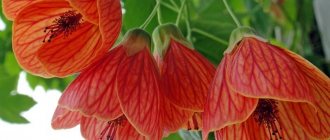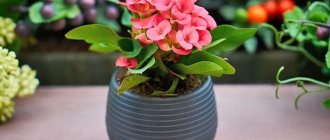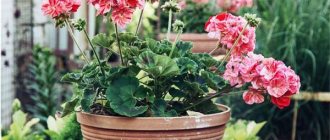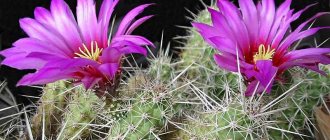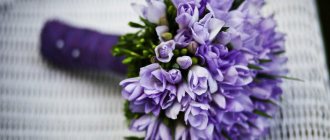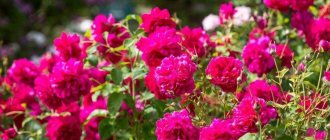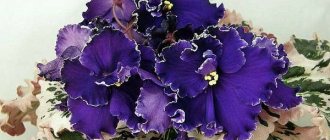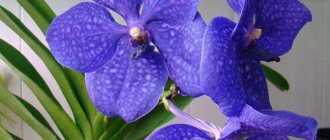Features and properties of light-loving plants
Plants that especially need light are called heliophytes. In nature, they can be found in regions with a tropical or subtropical climate - where there are long daylight hours. In their natural environment, such crops grow in open areas that are well illuminated by sunlight. Some species of heliophytes can adapt to low light conditions.
The main thing for indoor flowers is light and warmth
Keeping light-loving plants at home is not an easy task. If in summer the crop will have enough sunlight, but with the onset of cold weather there will be a need for additional illumination using phytolamps.
The leaves of light-loving crops are usually narrow, symmetrical, with a smooth surface or slightly pubescent. This pile performs a protective function by scattering sunlight and thereby protecting fabrics from burns. The shoots are quite short and have small hairs. The skin of crops that love light does not contain chlorophyll.
What plants that love sunlight are found in our climate? It's not just flowers, of course. Light-loving crops include plantain, water lily, larch, acacia, and corn. The list can go on for a very long time. Among the flowers there are also many light-loving representatives, many of which take root well in indoor conditions.
Flowering species
Decorative flowering plants can be placed in pots at home and in the office. In order for the buds to be lush and bright, and flowering to last as long as possible, they must receive as much sunlight as possible. However, most crops love diffused light, since direct rays can leave burns on the petals and leaves. The list of light-loving indoor plants includes both familiar and long-known species, as well as those just beginning to gain popularity among gardeners.
Begonia
This family includes more than 1000 varieties, which differ significantly in appearance and maintenance conditions. The largest specimens in this family can exceed 3 m in height, the smallest species are only 10–15 cm. The plant is distinguished by a large number of lush, bright buds, which can have red, yellow, orange, crimson and other shades. Decorative deciduous species do not have ordinary green foliage, but two-colored ones. The leaves have carved edges and are larger than those of flowering varieties.
Lighting requirements
Sunlight is one of the most important aspects of normal plant life. Only if there is sufficient lighting are they able to provide themselves with nutrients and us with oxygen. How much light do crops that grow at home in flower pots require? This directly depends on the species. But on average this is 5-10 thousand lux (for comparison: a flower grown on a southern windowsill receives about 100 thousand lux in one summer day).
An important condition in the matter of lighting is regularity and systematicity: the plant must receive a stable amount of light for 6-7 hours a day. And this is quite difficult to achieve (cloudiness, cloudy weather and other unfavorable factors).
Variegated (variegated) species
Variegated light-loving indoor flowers are represented by flowering, climbing, decorative foliage forms, usually perennial. The color of leaves and petals can be melange, with stripes and variegated spots.
Such plants are quite capricious. Requires plenty of sunlight, but not direct rays. Unresistant to temperature fluctuations, react sharply to cold drafts. Most variegated forms are the result of crossing varietal specimens. As a result, many varieties have unwanted mutations (non-chlorophyll cells), which form lighter spots on the surface of the leaves. Because of this, such flowers have low immunity.
The peculiarity of the variant forms is that the mutated cells interfere with the plants, they try to “get rid” of them and, when climatic conditions change, they lose their decorative properties.
In other words, if a plant does not receive enough light or grows in a room that is too hot or cold, its leaves become monochromatic.
Indoor light-loving plants with names and photos
The abundant flowering of many plants directly depends on how much sunlight they receive. It should be borne in mind that not all light-loving crops are absolutely light-tolerant - some of them are afraid of direct sunlight. Therefore, they need to provide diffused light.
Begonia
The family includes about a thousand species. They differ both in appearance and in content requirements. Large representatives of the family can reach a height of 3 m, while low-growing species do not exceed 20 cm.
Begonia includes about a thousand varieties
Geranium
This is one of the most common examples of a light-loving plant. Geraniums can be found naturally in South Africa. This is what determines the culture’s requirements for living conditions: long daylight hours and fairly high air temperatures. Geranium is famous for its lush flowering, which can be white, pink, or scarlet.
Geranium is conventionally divided into two categories: fragrant and flowering. The first category is characterized by rather unremarkable inflorescences, but the bright aroma of the leaves. The second category, on the contrary, is famous for its beautiful and long-lasting flowering.
Geranium is famous for its lush flowering
Kalanchoe
The culture belongs to the Crassulaceae family and is characterized by a love of sunlight. Kalanchoe is native to Asia, America, and Australia. The culture needs long daylight hours (at least 12 hours).
Kalanchoe blooms with small but very bright inflorescences of red, pink or white. Without enough light, the plant stops growing and may even die.
Coleus
This plant is very popular among gardeners, as it is very beautiful and at the same time undemanding to growing conditions. Coleus foliage resembles nettles and combines various shades: burgundy, yellow, red, green.
Pedilanthus
This crop belongs to the Euphorbia family and grows in America. Pedilanthus loves long daylight hours, and the light must be diffused. Pedilanthus is characterized by an unusual foliage color: it combines white and light green colors.
Phalaenopsis
The orchid is an incredibly beautiful flower that grows naturally in Asia and Australia. Phalaenopsis is actively used in home floriculture and includes more than 70 species. Among phalaenopsis there are plants with different lighting requirements: some love the rays of the sun, others prefer diffused light or grow well in the shade.
Those that are characterized by light-loving need a 12-hour day of light. In any case, the leaves of the plant should be protected from direct sunlight, which can cause burns.
Phalaenopsis
Pedilanthus
Coleus
Kalanchoe
Ficus
Ficus is a light-loving crop, but can suffer from direct rays of the sun. To prevent this from happening, you should protect the leaves from ultraviolet radiation while the sun is especially active. In winter, when there is a lack of lighting, it is important to provide the ficus with additional artificial light, otherwise the leaves may dry out and crumble.
Ficus indoors - light-loving culture
Cyperus
Cyperus is a perennial plant with herbaceous shoots. The leaves grow from nodes, making them resemble umbrellas. Cyperus grows well both in a shaded place and in conditions of bright but diffuse sunlight.
If cyperus is grown under artificial lighting, the daylight hours should be at least 15 hours.
Author's advice
Cyperus is a perennial plant
Ficus
Speaking about light-loving indoor plants, it is impossible not to dwell at least briefly on ficus plants, especially our favorite - ficus Benjamin with small bright leaves. However, all ficus plants have a powerful root system and beautiful elastic leaves.
Ficus Benjamin is preferred to be grown in apartments because it is easy to form as a bush and is suitable even in relatively small spaces.
All ficuses love the sun, since their homeland is hot countries, where they grow like trees, reaching large sizes. In addition, they need abundant, although not very frequent, watering and a fairly high temperature.
Morphology
Large indoor plants
Adaptation to intense light is ensured by the peculiarities of the morphology and physiology of light-loving plants. They usually have rather thick leaves, often located at a large angle to the light (sometimes almost vertically); the leaf is shiny (due to the developed cuticle) or pubescent. In light-loving plants, lignification of shoots with the formation of thorns and thorns is much more common (compared to shade-loving plants). Characterized by a large number of stomata, which are concentrated mainly on the underside of the leaf; The multilayered palisade parenchyma consists of small cells. Compared to shade-loving plants, heliophytes have a significantly higher content of chloroplasts in leaf cells - from 50 to 300 per cell; the total surface of leaf chloroplasts is tens of times greater than its area. Due to this, a high intensity of photosynthesis is ensured - a distinctive feature of heliophytes. Another morphological difference from shade-loving plants is the higher chlorophyll content per unit area and less per unit leaf mass.
Saintpaulia or Usambara violet (Saintpaulia)
This plant grows wild on the coasts of water bodies in East Africa. Saintpaulia gained wide popularity in Europe and America only in the 20th century, shortly after its discovery and description in 1892. To date, over 32 thousand varieties of Uzambara violet have been bred. The leaves of the plant are densely covered with small fibers, the flowers are simple or double, multi-colored. When caring for Saintpaulia, you should avoid getting water on the leaf blades to avoid burns from the sun's rays.
Saintpaulia prefers to grow on eastern and western windows in soft, diffused light. The pot is selected taking into account the size of the root system, but it is quite tight. In a spacious container, the roots will have to spend a lot of effort developing the soil and this will significantly delay the start of flowering. It is better to water Saintpaulia through a tray, since waterlogging of the soil can lead to rotting of the roots and death of the bush. Usually the flower is propagated by rooting the leaf, much less often by dividing the bush and by seeds.
